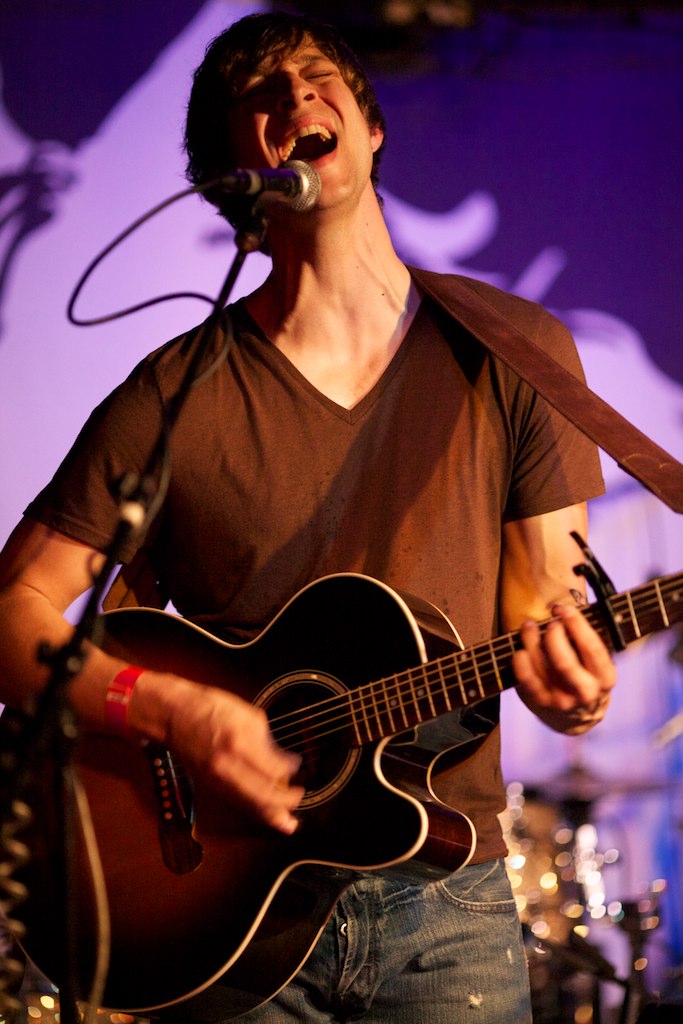Ha, guess Canon weren't just sat on their @rses for 4 years between the mk2 and mk3

Actually, you should be fine with ISO 6400 on your 5D Mk II.
This was shot with a 5D II at ISO 6400:
 Chris Koza in Concert
Chris Koza in Concert by
Tim Campbell1, on Flickr
Is there noise in it? Yes... the next image over in the Flickr "set" is a 100% crop on his face (from the same photo as this one) and at that resolution you can definitely see the noise. At web resolutions the noise is still pretty tame. At ISO 800 you should have great difficulty detecting noise in your images.
Note this is because you own a 5D II. I can think of lots of cameras that would have obvious noise levels at ISO 800. Most newer cameras don't have a problem. Older cameras will struggle. I was just reading a review of the Pentax K-30 in an issue of Pop Photo on a plane flight and was pretty surprised to see that ISO 800 is pretty much as high as it gets. Any ISO above that was rated "unacceptable" by the reviewers. In comparison, they gave the 5D III the same moderate score at ISO 25,600 and it didn't become "unacceptable" until 51,200.
Meanwhile back to the original discussion...
When I approach any shot, what I WANT is the luxury of using any ISO, any aperture, or any shutter speed. That's what I want ... but I don't always get what I want.
Here's my thought process & preference for what modes I use and why.
1) If I'm not shooting action and I have plenty of light, my preference is to use aperture priority mode (Nikon "A", Canon "Av"). That's because I now have the luxury of controlling the depth of field to anything I want. I'm not so much thinking of this as setting the aperture just arbitrarily... I'm setting it for depth of field purposes. The "plenty of light" stipulation I mentioned says that I don't have to worry about shutter speeds that are too slow for a hand-held shot (BTW, mini-rant here... I am NOT averse to carrying a tripod around... something I do quite often. As a photographer, be willing to do what you
need to do to get the shot right. No being lazy about hauling gear or walking to the right location, etc. and then blaming the camera or conditions later. If it was _possible_ to get the shot by any means, and you didn't get the shot, then that's _your_ fault. Not the equipment. The equipment is, for the most part, not allowed to vote on how you take the shot. You make the decisions... you take the responsibility.

)
2) If I am shooting action, then I don't necessarily have the luxury of shooting at any speed. Now we've got a minimum shutter speed limit. I switch to shutter speed priority (Nikon "S", Canon "Tv") and set the speed to whatever it needs to be... whether I'm trying to create deliberate motion blur or freeze action.
3) If I don't trust the light meter (high key and low key shots are good examples) then I pull out the incident light meter and find out how much light I _really_ have. I have two of them... a small compact incident meter, and a larger full-function meter.
There are lots of nuances to this. At event photography I often use aperture priority but set an exposure compensation bias. There's a lot of low-key conditions. The camera wouldn't naturally get the exposure right, but since I know that it'll probably consistently over-expose by about 1-1/3rd stops, I can just dial in the compensation rather than follow rule #3. This is especially important since, at a concert, the lights are often varying rapidly and I'd _never_ keep up with the rapidly changing conditions if trying to shoot entirely in manual mode.
Most of the time, I use Av on my camera.


![[No title]](/data/xfmg/thumbnail/42/42349-fa3065c4e047f0114ec8715d9168dff9.jpg?1734176875)







![[No title]](/data/xfmg/thumbnail/42/42350-49b17d39599ec1d51c6d801ea651d3af.jpg?1734176878)


